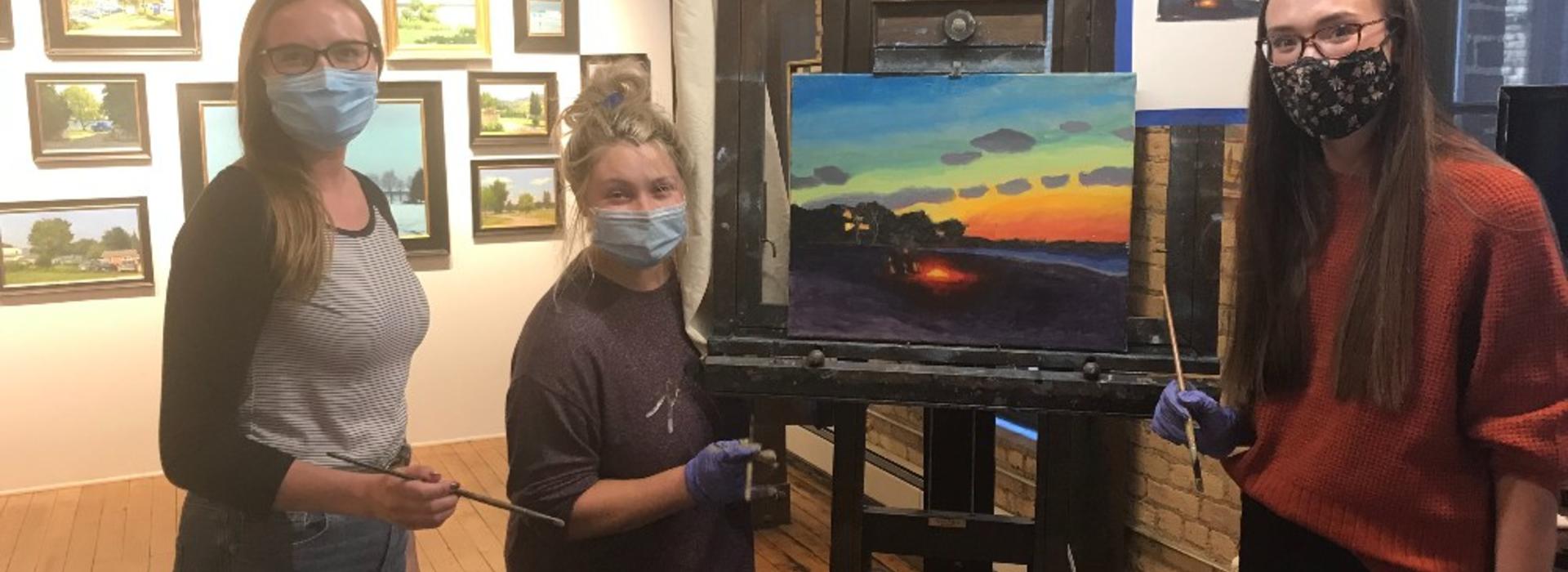
Course Elective Highlights the Intersection of Art and Medicine
The University of Minnesota Medical School first began offering the Medicine and the Arts elective course in the fall of 2017. The two-week intensive elective course was the creation of David Power, MBBS, MBH, professor, and Jon Hallberg, MD, associate professor, both in the Department of Family Medicine and Community Health, highlighting the beauty at the intersection of art and medicine.
The two doctors came up with the idea for the course when they considered the lack of artistic opportunities that third- and fourth-year students have throughout their medical school education.
Reflecting on the last five years, Dr. Power shared that it’s been an enriching experience for both the students and himself.
“Our learning goals were one, that students would be able to develop their own artistic interests,” said Dr. Power. “...and two, that students would be able to experience the overlap between medicine and the arts.”
The course offers sessions with U of M Medical School alumni and medical professionals. This past fall, students participated in sessions, including a dance class, writing workshops, participating in a “stand up” Medical Improv workshop, visits to artists’ studios, community tours, architectural studies and lessons in oil painting.
The course also provides students the opportunity for independent study time. Dr. Power said that this time is used for students to focus on developing their skills in one artistic medium in particular.
Lien Phung, a fourth-year medical student, had wanted to take the elective course since her first year at the U of M Medical School. This past fall, she participated in the course along with five other students. She said that she recommends this course to everyone.
At the end of the two-week elective, each student is challenged to share an artistic portfolio from their independent study during a showcase. Lien shared a collection of photographs that she had taken over the course of her training in Minnesota.
“I used the pictures to represent talking points to help me tell the story of my medical school journey,” Phung said.
One of the photos in her collection was of campfire embers.
“It signifies the internal fire within me to learn was burning out, and at one point, I felt burnt out,” Phung said.
Dr. Power shared that one of the most well-received sessions in the course was centered around academic burnout. The session was titled How to Avoid Burnout in 73 Minutes and was hosted by Stuart Bloom, MD, MSc, an associate professor in the Department of Medicine.
“Medicine has become very aware of burnout and the need to prevent that and to take care of ourselves as people,” Dr. Power said.
Dr. Bloom sang and performed on the piano, creating an artistic representation of avoiding burnout.
Dr. Power and Dr. Hallberg attempt to participate in as many of the events as they can with the students each year. They look forward to the future of the program as they continue to find ways to instill students with a passion for medicine in the arts. The Medical School’s Center for the Art of Medicine will become increasingly involved with hosting this elective in the future.